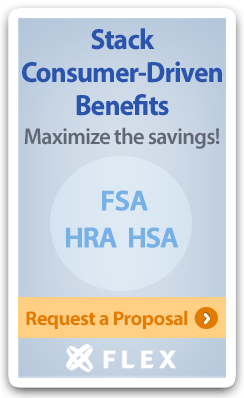Benefits Buzz
The IRS Ruling that (almost) Killed the HRA Industry on Friday the 13th Nonetheless
Posted on September 13th, 2016

Today, September 13, 2016, marks the three-year anniversary of the release date for IRS Notice 2013-54, which ironically occurred on Friday the 13th. A few years back, benefits industry leaders thought employers could be deterred from adopting Health Reimbursement Arrangements (HRAs) since much of the guidance made changes to the types of HRAs that could be offered. Below is a snapshot of the (now) permissible types of HRAs. The names for the HRA classifications listed below are informal and are not specifically used by the IRS or other agencies in official guidance.
- Integrated HRA: In general, the only participants on the HRA can be those that are also covered by a group major medical plan. In addition, participants must be given the option to opt-out and permanently waive current and future reimbursements from the HRA.
- Excepted Benefit HRA: This is a type of HRA that only reimburses excepted benefits. The most common example of this type of HRA is one where the only eligible reimbursements are for those of dental and/or vision expenses.
- Retiree/Former Employee HRA: This is a type of HRA that only provides reimbursement to former employees, such as retirees. The most common example of this type of HRA is one where the employer reimburses retirees for insurance premiums, including Medicare premiums, and potentially other out-of-pocket medical expenses.
- Small Benefit HRA: This is a type of HRA where the maximum reimbursement available is $500 or less. In addition, the employer must make group major medical coverage available to participants, but the participants are not required to be covered by a group major medical plan like they are with the Integrated HRA. Without getting into all the technicalities, this type of HRA is generally regulated as if it were a Health Flexible Spending Account (Health FSA) which is why enrollment in the group major medical plan is not required.
- Spend-Down HRA: These are HRAs that were in place in 2013 and included a carryover provision for unused balances. Employers can continue to offer these HRAs to participants until their account balance is $0, however, the employer cannot add additional funds to the HRA for years 2014 or later.
Three years later, and despite all of the changes, HRAs continue to thrive as a valuable benefit. HRAs have most commonly been directly tied to health plans, so the Integrated HRA continues to be offered by many small and large employers. Excepted Benefit HRAs continue to be used as an alternative to insured dental and vision plans. Former employee HRAs, in particular Retiree HRAs, are increasingly being used as a more affordable alternative to traditional retiree health coverage. Additionally, Small Benefit and Spend-Down HRAs continue to have their niches.
Notice 2013-54 gave us all a good scare at first, but in reality, there’s just some new rules to play by which have not prevented HRAs from being incorporated into successful benefit strategies.
Subscribe to this blog at the top left navigation by entering your email address to learn more with Flexible Benefit Service LLC (Flex). The materials contained within this communication are provided for informational purposes only and do not constitute legal or tax advice.

